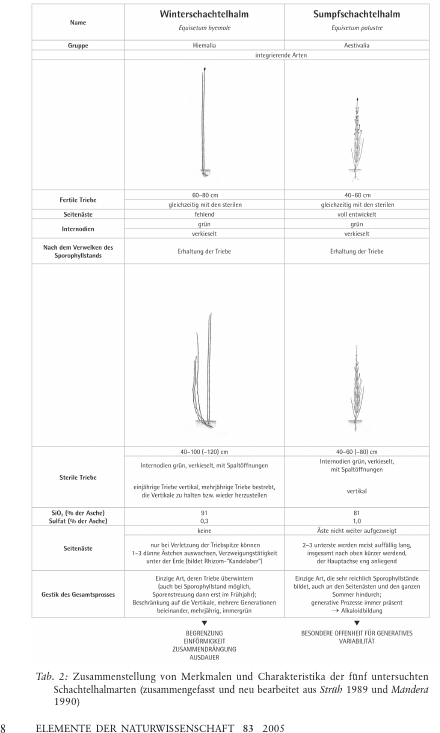Equisetum-Arten im Steigbild
Export Article Citation as
- Plain text
- BibTeX
- RIS format
- Download price : € 6.00
Abstract:
Previous analytical investigations and a Goethean-morphological classification of the genus Equisetum are here extended by studies of aqueous extracts of five native horsetail species. Taste tests and rising pictures (capillary dynamolysis) of its various organs in the course of the year provide insight into the contrasting life processes of the different species. Extracts of rough and marsh horsetails (E. hyemale and E. palustre), both of which combine morphologically vegetative and generative processes, always have mixed tastes and usually show mixed rising picture types. Morphologically, wood and great horsetails (E. silvaticum and E. telmateia) produce their generative processes as ‘fertile shoots’ diverging from the vegetative; physiologically a single, leafy taste occurs. Over a longer period and with samples of various organs, a single rising picture type appears: striving-upwards type with wood horsetail; depositing type with great horsetail. The special position of the common horsetail (E. arvense) that is used medicinally is confirmed by these investigations. Extracts sometimes present only one taste and sometimes a greater assortment of tastes mixed together. Its rising pictures are predominantly of the swelling type through which a youthful-vital ‘creative formation of substance’ is expressed.


